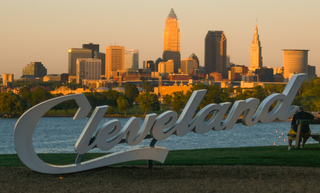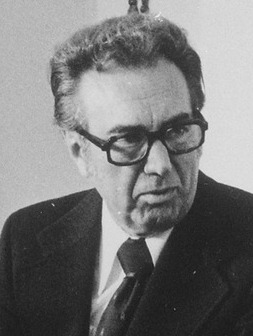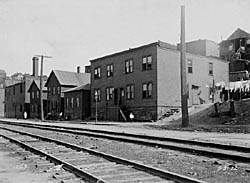
Cleveland is a city in the U.S. state of Ohio. Located along the southern shore of Lake Erie, it is situated across the Canada–United States maritime border and lies approximately 60 mi (97 km) west of Pennsylvania. Cleveland is the most populous city on Lake Erie, the second-most populous city in Ohio, and the 54th-most populous city in the U.S. with a population of 372,624 in 2020. The city anchors the Cleveland metropolitan area, the 33rd-largest in the U.S. at 2.18 million residents, as well as the larger Cleveland–Akron–Canton combined statistical area with 3.63 million residents. It is the county seat of Cuyahoga County.

Lake Erie is the fourth-largest lake by surface area of the five Great Lakes in North America and the eleventh-largest globally. It is the southernmost, shallowest, and smallest by volume of the Great Lakes and also has the shortest average water residence time. At its deepest point Lake Erie is 210 feet (64 m) deep, making it the only Great Lake whose deepest point is above sea level.

Cuyahoga County is a large urban county located in the northeastern part of the U.S. state of Ohio. The county seat and largest city is Cleveland. As of the 2020 census, its population was 1,264,817, making it the second-most populous county in the state.

Rocky River is a city in western Cuyahoga County, Ohio, United States. A suburb of Cleveland, it is located along the shore of Lake Erie approximately 9 miles (14 km) west of downtown Cleveland. The city is named for the Rocky River that forms its eastern border. The population was 21,755 according to the 2020 census data results.

The Cuyahoga River is a river located in Northeast Ohio that bisects the City of Cleveland and feeds into Lake Erie.

The Clean Water Act (CWA) is the primary federal law in the United States governing water pollution. Its objective is to restore and maintain the chemical, physical, and biological integrity of the nation's waters; recognizing the responsibilities of the states in addressing pollution and providing assistance to states to do so, including funding for publicly owned treatment works for the improvement of wastewater treatment; and maintaining the integrity of wetlands.

Ralph Joseph Perk was an American politician who served as the 52nd mayor of Cleveland, Ohio from 1971 to 1977.

Interstate 490 (I-490) is a 2.43-mile (3.91 km) auxiliary Interstate Highway in Cleveland, Ohio. The western terminus is a junction with I-90 and I-71 on Cleveland's west side. After spanning the Cuyahoga River, I-490 reaches its eastern terminus at a junction with East 55th Street, just east of I-77.

Irishtown Bend is the name given to both a former Irish American neighborhood and a landform located on the Flats of the west bank of the Cuyahoga River in the city of Cleveland in the U.S. state of Ohio in the United States. The landform consists of a tight meander in the Cuyahoga River, and the steep hillside above this meander.
The Cleveland Memorial Shoreway, often shortened to "the Shoreway", is a limited-access freeway in Cleveland and Bratenahl, Ohio. It closely follows the shore of Lake Erie and connects the east and west sides of Cleveland via the Main Avenue Bridge over the Cuyahoga River. The entire length of the Shoreway is part of the Lake Erie Circle Tour (LECT) and all but the very eastern end of the Shoreway is part of State Route 2. The Shoreway also carries parts of Interstate 90 and State Route 283 on its eastern side, and parts of U.S. Route 6 and U.S. Route 20 on its western side. The Cleveland neighborhood of Detroit-Shoreway is named after the two roads that form the northern border, the Shoreway and Detroit Avenue.
The Legal Aid Society of Cleveland is a legal aid society in Cleveland, Ohio established in 1905. It helped pioneer a nationwide legal aid movement whose leaders held to a simple but profound principle: that rich and poor alike are entitled to equal treatment under the law.

Donald Clark Nugent is a senior United States district judge of the United States District Court for the Northern District of Ohio.
Frank Robert Pokorny was an American attorney and politician who served as a member of the Ohio House of Representatives of the U.S. state of Ohio. He represented Cuyahoga County from 1957 to 1961, and again from 1963 to 1965. After redistricting and the establishment of state districts, he represented District 57. He was appointed to the Cuyahoga County Board of Commissioners after the death of the incumbent, and served from February 1968 to April 1976. He resigned from office on April 12, 1976, after being indicted for misconduct of office. He pled guilty, and never served in public office again.
Thomas D. Ganley was an American businessman and politician who was an unsuccessful Republican congressional candidate.

This article is a timeline of the history of the city of Cleveland, Ohio, USA.

Abram Creek, in Cuyahoga County, Ohio, is a tributary of the Rocky River, draining 10.6 square miles in parts of Berea, Brook Park (31.3%), Cleveland (13.1%), Middleburg Heights (48.8%), and a very small portion of Parma Heights(0.2%).

On November 22, 2014, Tamir E. Rice, a twelve year old African-American boy, was killed in Cleveland, Ohio, by Timothy Loehmann, a 26-year-old white patrolman with the Cleveland Division of Police (CDP). Rice was carrying a replica toy gun; Loehmann shot him almost immediately upon arriving on the scene. Loehmann and his partner, 46-year-old Frank Garmback, had been responding to a dispatch call regarding a male who had a gun. A caller reported that a male was pointing "a pistol" at random people at the Cudell Recreation Center, a park in Cleveland's Public Works Department. The caller twice told to the dispatcher that the pistol was "probably fake", and also stated that the male was "probably a juvenile", but the dispatcher did not relay either of these statements to Loehmann and Garmback.

The Cleveland Foundation Centennial Lake Link Trail, originally known as the Lake Link Trail, is a cycling, hiking, and walking trail located in the city of Cleveland, Ohio, in the United States. Owned by the city of Cleveland and maintained by Cleveland Metroparks, the trail runs along the former track bed of the Cleveland and Mahoning Valley Railroad. The trail is named for The Cleveland Foundation, a local community foundation which donated $5 million toward the trail's construction. The southern leg of the 1.3-mile (2.1 km) trail opened in August 2015, and the northern leg in August 2017. The middle leg will begin construction once the Irishtown Bend hillside is stabilized. A bridge connecting the trail to Whiskey Island will begin construction in Spring 2019 and will be completed in early Summer 2020.

Euclid Creek is a 43-mile (69 km) long stream located in Cuyahoga and Lake counties in the state of Ohio in the United States. The 11.5-mile (18.5 km) long main branch runs from the Euclid Creek Reservation of the Cleveland Metroparks to Lake Erie. The west branch is usually considered part of the main branch, and extends another 16 miles (26 km) to the creek's headwaters in Beachwood, Ohio. The east branch runs for 19 miles (31 km) and has headwaters in Willoughby Hills, Ohio.

Robert Walter Jones was a Cleveland, Ohio lawyer, politician, law professor, civil rights litigator and environmentalist. As an attorney, he was employed in public capacities in Northeastern Ohio as a Legal Aid Public Defender, United States Attorney, and City of Cleveland attorney. In response to the Cuyahoga River fire, as U.S. Attorney in 1970 he led the first Federal grand jury water pollution investigations and prosecutions setting into motion the recovery of the Cuyahoga River and Lake Erie and the development of the Clean Water Act.















